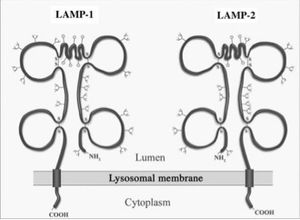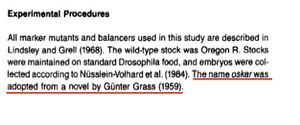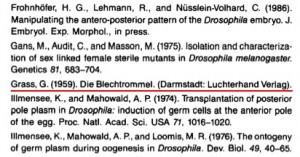by Lauren, CEO of propel careers
this post is reposted from the propel careers blog.
Numerous options exist to identify potential companies to work for, especially those companies that are innovative, but not (yet) well-known. Below is a top ten list of ways to uncover exciting and innovative companies relevant to your area(s) of interest. The advice provided below is applicable to all industry sectors, but the specific examples have been tailored for the life sciences sector.
Tip 1: Utilize your connections
Your connections include college and graduate school classmates, lab mates, friends, clubs and social groups, connections from industry associations, neighbors, mentors, teachers, and people you meet at networking events and conferences. These connections should extend to alumni of your academic institutions. Even though you may not know these individuals personally, you share a common experience that can be leveraged for your career search. Your connections may not be involved in your exact area(s) of interest (i.e. cancer research or cardiovascular medical devices), but may have connections to those who are. Develop your elevator pitch/email and share it with your contacts to succinctly inform them of your background and what you are looking for (i.e. research in a small biotech or consulting in a boutique firm). Use LinkedIn to keep in touch. Build out your profile so that your connections and potential employers can see your background.
Tip 2: Industry News Feeds
Every industry has news sources that profile advances, industry trends and companies in the sector. Sources such as www.Xconomy.com (entrepreneurial technology/life sciences oriented companies), www.biospace.com (life sciences companies), or www.devicespace.com (medical device companies) are a few examples. Hundreds of news sources exist (from general to extremely specific), so seek out news feeds relevant to your interests and subscribe to them.
Tip 3: Publications
Search Google Scholar or Pubmed to identify research related to your interests. Recent publications in your area of interest can tell you a lot about who is currently working in the space.
Tip 4: Conferences
Conferences are ubiquitous in every industry. In the life sciences industry, there are large conferences such as BIO http://www.bio.org/ or AdvaMed http://advamed.org , disease focused conferences such as AACR http://www.aacr.org/ or Society for Neuroscience -http://www.sfn.org/ and smaller focused conferences such as 2nd Annual Predictive Preclinical Models in Oncology conference http://www.worldpharmacongress.com/Pre-Clinical-Models-Oncology/. Once you identify conferences relevant to your interests, look at the speakers, posters, and exhibitors. This will help uncover companies that work in your area and provide insight into organizations which may be a fit.
Tip 5: Industry Associations and Trade Groups
Organizations such as MassBio http://www.massbio.org/ and MassMedichttp://www.massmedic.com have a wealth of information on biomedical research companies in Massachusetts.s. Similar resources are available in most states, and most countries have organizations that represent and focus on specific industry sectors. These organizations are an invaluable resource. Sign up for their newsletters and newsfeeds to keep yourself current.
Tip 6: Industry Reports
Many consulting firms like Ernst and Young and PWC compile extensive industry sector specific reports or white papers. Their life sciences and medical technology reports are very informative and provide tremendous information about companies, trends, and issues related to the industry.
Tip 7: Venture Capital Organizations
Look into websites for venture capital organizations that fund companies in your area of interest, especially if you are looking to work in a start-up. Many of these organizations profile companies they have invested in on their websites. It is not uncommon for portfolio companies to initially operate in "stealth mode," therefore it may be hard to find information about them from other sources.
Tip 8: LinkedIn
Search LinkedIn using the advanced search feature. In the keywords section, enter your areas of interest - i.e. prostate cancer therapeutics, oncology microfluidic diagnostic platform, or atrial fibrillation. Search by 1st degree connection and see what comes up. If only a few people appear in the search results, then expand the search criteria to 2nd and 3rd degree connections. Click on the profiles and see where the individuals work. This may identify companies of interest and will also show you information about the backgrounds of people who work there.
Tip 9: Blogs
Many thought leaders in each industry write sector specific blogs. Follow these individuals to keep up with the latest industry news, trends, and companies.
Tip 10: Web Searches
Search the internet for specific key words relevant to your area of interest to identify companies working in the area. Review the company websites and read pages such as, about us, company history, scientific advisors, advisory board, management team, investors, and partners. These pages provide useful information about the focus of the company and may help you learn about other companies. For example, the investors tab will often highlight the venture capital firm or firms that have invested in a particular company. Reviewing this page may help you identify a VC that you were unaware of. Review the VC's webpage to learn about other companies that this firm invests in. Then add "companies of interest" to your "target company list".
The amount of information available regarding companies, research, and exciting opportunities is staggering. By focusing your search efforts, you will uncover new and exciting companies aligned with your career aspirations. Tailor your approach to increase your effectiveness and efficiency, otherwise you may find yourself spending hours searching for that needle in the haystack. Through this process, you will learn about companies and the industry in which they work. The information you obtain will be invaluable as your career develops.








